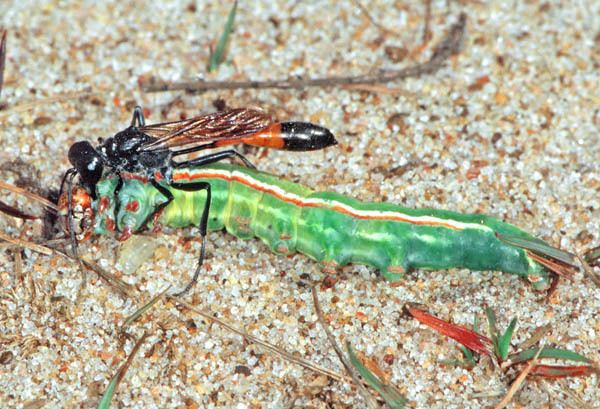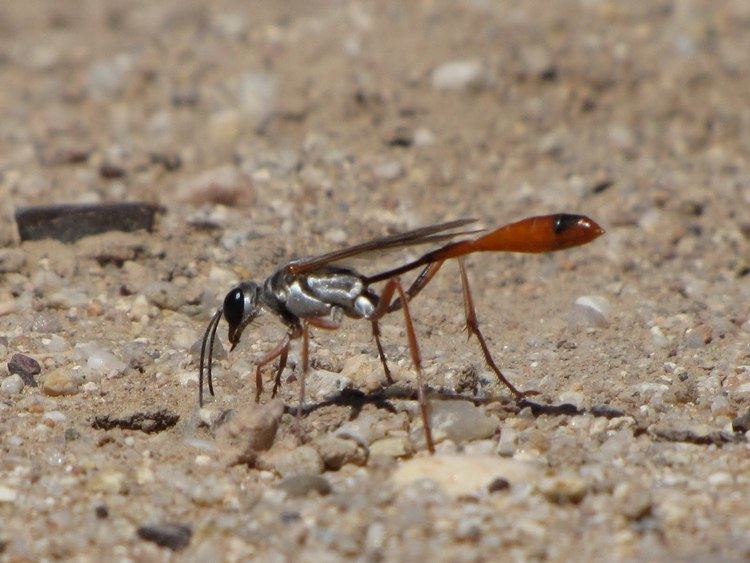Subfamily Ammophilinae Rank Genus | Scientific name Ammophila Higher classification Ammophilinae Order Hymenopterans | |
 | ||
Similar Ammophila sabulosa, Insect, Sphecidae, Hymenopterans, Sphex | ||
Ammophila is the type genus of the subfamily Ammophilinae of the hunting wasp family Sphecidae. Ammophila is a large and cosmopolitan genus, with over 200 species, mostly occurring in the warmer regions of all continents apart from Antarctica.
Contents

Vernacular names

They sometimes are referred to as "Thread-waisted wasps", but the name is not definitive, because many other members of the Sphecidae are thread-waisted too, and referred to as such. Sometimes Ammophiline wasps are referred to as "sand wasps"; this may be better because it is consistent with the name Ammophila, which derives from the Greek for "sand lover", presumably because many species dig their nests in sand. However, as is frequent in dealing with common names, there is no definitive common name for the Ammophilinae; entomologists usually confine themselves to the technical names for convenience and clarity.
Morphology and habits

As is frequent in large genera, there is considerable variation in their habits and appearance, but predominantly they are medium-sized wasps of strikingly slender build, with antennae about as long as the head plus thorax.
The jaws are not large, but are strong and apart from feeding and digging, often are used for unexpected functions such as holding a pebble with which the wasp hammers down soil to seal a nest, or to grip the stem of a plant at night, holding its body at right-angles to the stem, its legs folded and all the weight taken up by the mandibles. This habit is not unique to Ammophilinae — some bees, such as Amegilla also overnight in that way, and Fabre documented some others.
Nesting
Nesting is generally by digging an unbranched tunnel in sandy soil, but provisioning can be progressive, the mother bringing prey as the larva requires it, or mass provisioning, where each nest is provided with a single large prey item, or as many small prey items as should be required. Prey selection depends on the species available but mostly moth and sawfly caterpillars are chosen.
Species
Listed alphabetically.
